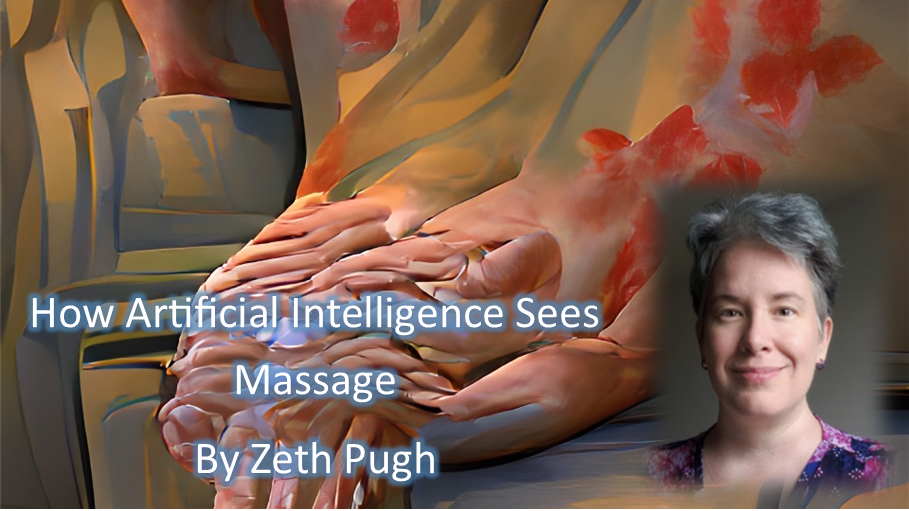
This three-part series explores how neural networks visualize massage. Using a combination of AI, machine learning, QGAN+CLIP, artist Zeth Pugh generated images using three sets of key words. “Massage,” “Reiki,” and, “chakras.” Additional prompts told the AI to focus on a type of art to base the image on.
Check back soon for Pugh’s article on “How Massage Educators & Instructional Designers can utilize the power of artificial intelligence to generate photorealistic images that celebrate diversity and save money on stock photography.
Part I: How Artificial Intelligence Sees Massage
Artists also have access to incredible AI technology. Recently Florida-based artist Zeth Pugh has been experimenting with a variety of tech-based applications. “Google Colab notebooks are amazing. They are freely available and don’t run anything locally. For less than $10 a month I have access to fast rendering on someone else’s graphics cards and keep the copyright on everything that is made.”
Pugh also uses a variety of other platforms as well. One free site that is user-friendly is www.artbreeder.com. https://creator.nightcafe.studio/ is another. “Free apps and sites often will limit you to a certain number of images per day. The computing power needed to generate the images isn’t free.”
Some programmers have created downloadable projects. Visions of Chaos is one of them. Another fun program that is driven by advanced mathematics rather than AI is Ebsynth.
Advanced Link: This notebook can be used by anyone who is curious. Before you start, make a copy of it into your own google drive folder. Use the copy to experiment. This one allows you to make AI animations! Youtube has a lot of tutorials if you need help. https://colab.research.google.com/github/chigozienri/VQGAN-CLIP-animations/blob/main/VQGAN-CLIP-animations.ipynb#scrollTo=wOSNC5SwHBry
QGAN+CLIP technology uses massive image sets to generate unique images. A variety of inputs, including a text prompt, are used to guide it. The program generates multiple iterations of an image until the AI is satisfied. The best results seem to come from using a a sentence, but one-word prompts can also be interesting.
Pugh was curious what would happen if she used “massage” as the text. As results were generated one-by-one the text was tweaked to, “therapeutic relaxation massage,” and “deep tissue massage.” The latter generated some disturbing results.
“I realized early on that images involving tissue, flesh, or muscle can create nightmare fuel. I had no idea what to expect for massage. I am pleased to say that there were only a few renderings that I had to discard because they were inappropriate.”
Pugh believes that massage educators need to be aware of massage in the overall media. “As you can imagine, a lot of the multimedia available is not the kind that we are interested in being associated with. Thankfully those don’t seem to be included in the datasets that these programs pull from.”
So how does a neural network see massage therapy?
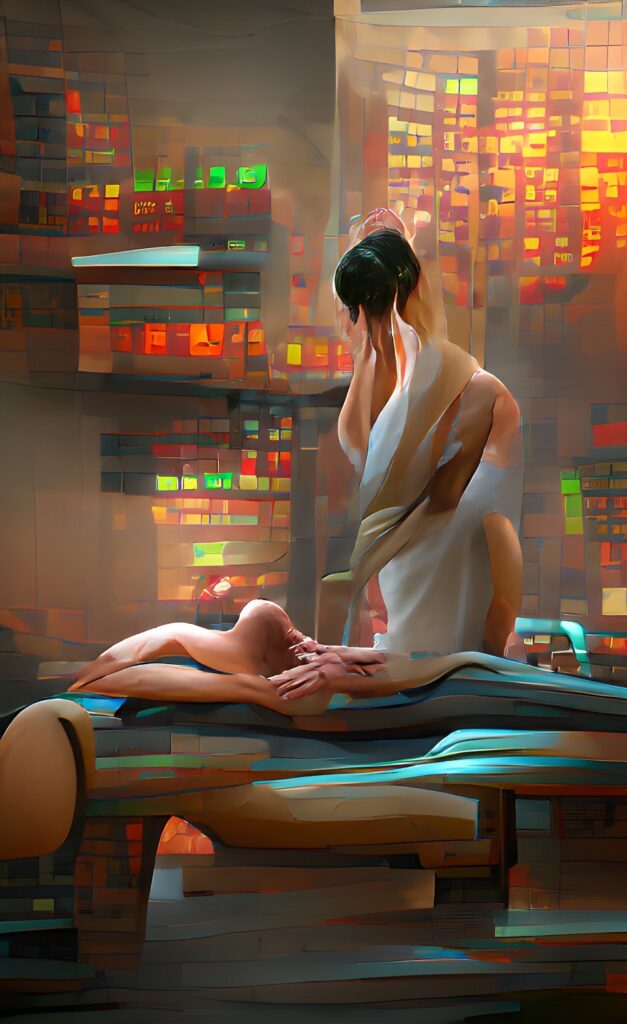
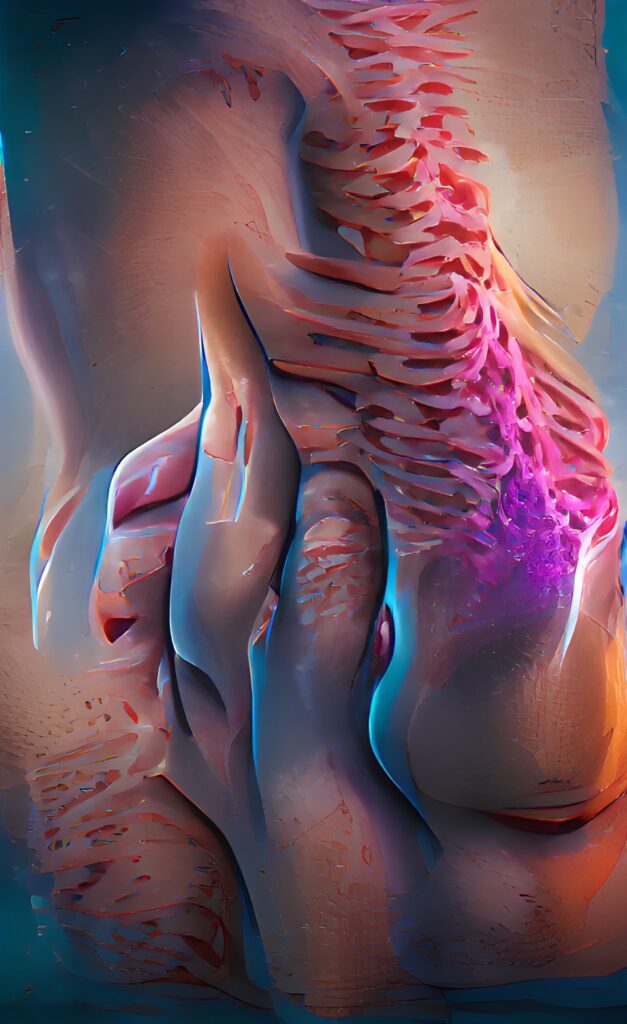
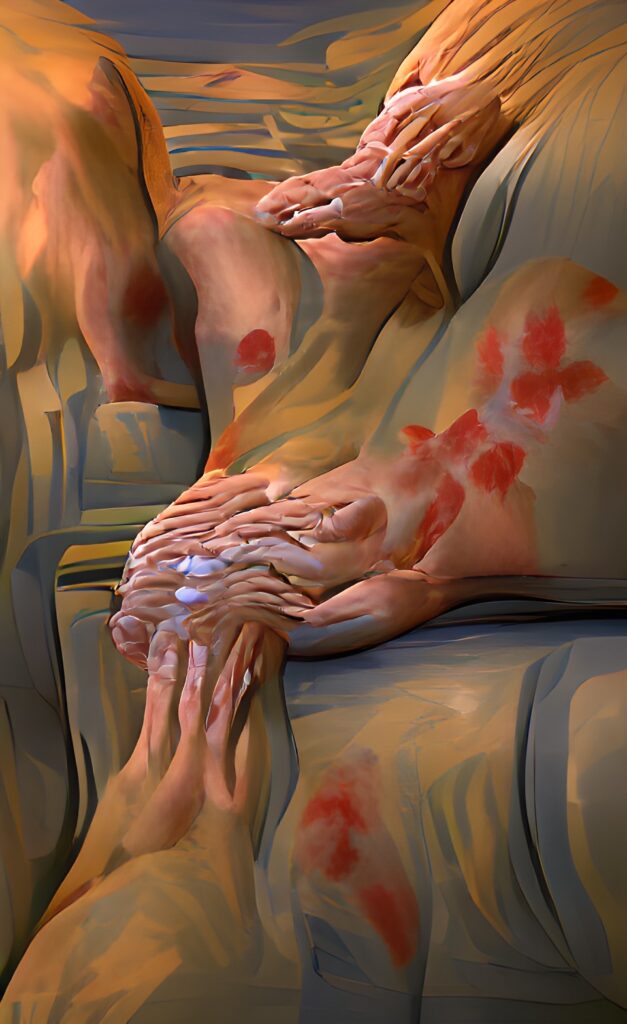
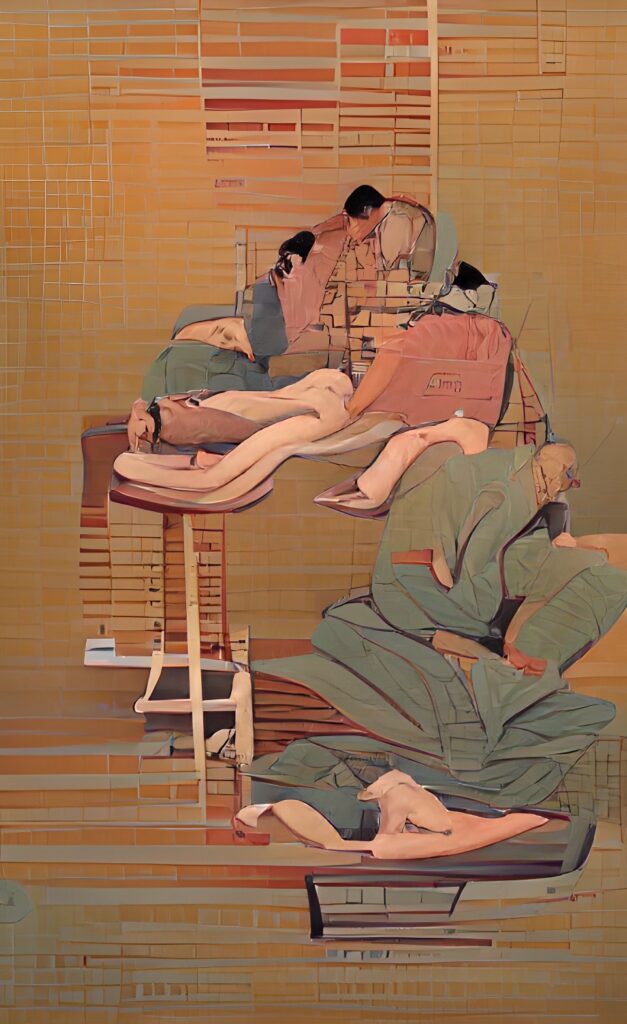
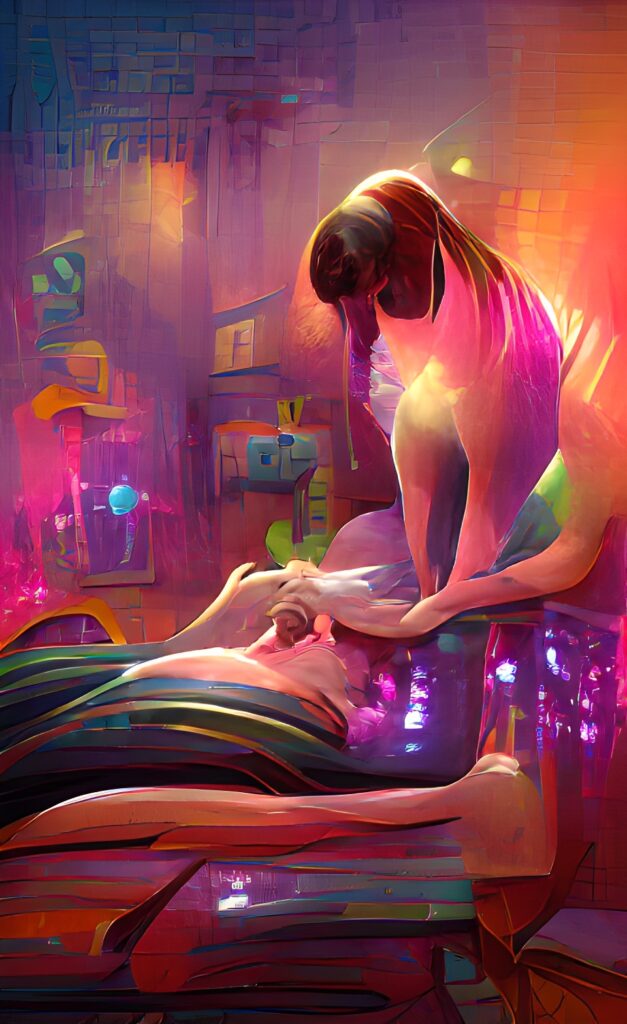
Conversation starting-prompt: What did you think of the way machine learning interprets massage?
Check back on 3/16/22 for Part II: How AI sees Reiki
Call for volunteers: If you are an artist, writer, or marketer, contact Zeth about helping out the Marketing & Communications committee.
About the Author:
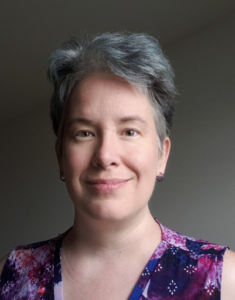
Zeth Pugh, M.Ed., CMBE is currently serving as a Director of the Alliance.
Zeth is an artist, writer, and instructional designer living in Florida. She presented “Trends in Anatomy Education” at the 2021 AFMTE Educational Congress.
Zeth is building the Marketing & Communications Committee. Potential volunteers can reach her at zethpugh@gmail.com.
